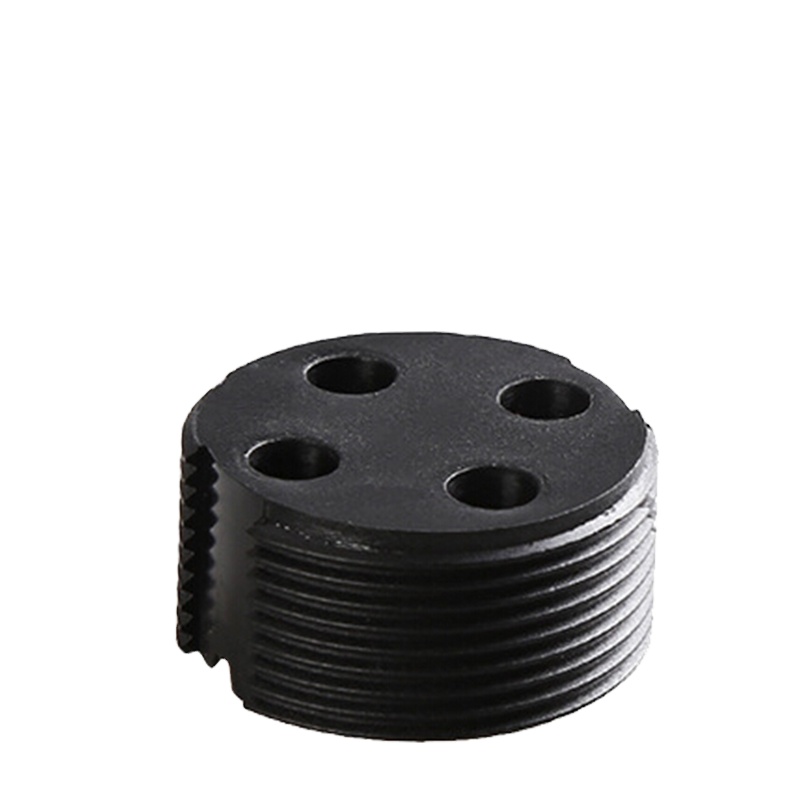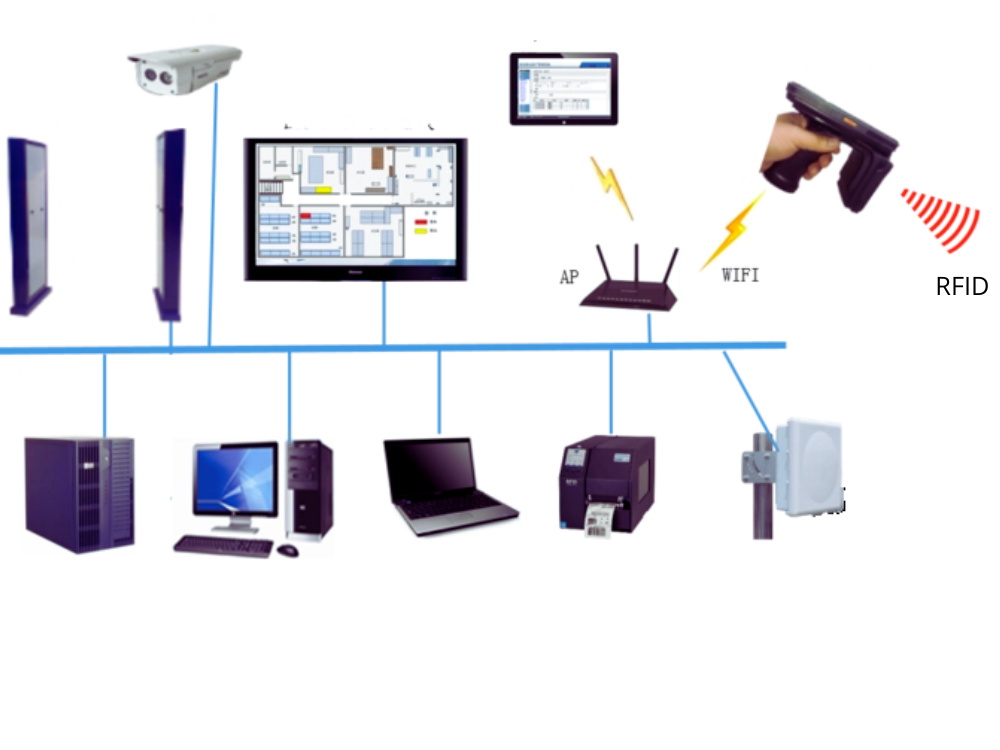
Enhancing Custom Cabinetry with RFID Technology
Table of Contents
Summary
By deploying an RFID system alongside advanced enterprise resource planning (ERP) software, the company has optimized its operations, offering real-time order tracking and streamlined production processes.

Overview of RFID Integration at Bishop Cabinets
Bishop Cabinets, a prominent manufacturer of semi-custom cabinetry, has embraced RFID technology to modernize its production facility. This strategic move aims to enhance operational efficiency, ensure accuracy, and improve customer service. The company’s use of RFID tags and readers is transforming its approach to handling custom orders and tracking components throughout the manufacturing process.
The Role of RFID Technology
RFID technology plays a crucial role in automating and refining the production workflow at Bishop Cabinets. Each component of a custom cabinet is tagged with a passive UHF RFID tag, which is linked to the ERP system. This system enables real-time tracking of parts as they progress through various workstations, ensuring accurate order fulfillment and minimizing errors.
Key Components of the RFID System
Component | Description |
RFID Tags | Passive UHF tags are attached to each part, containing unique IDs and linked to the ERP system. |
RFID Readers | Devices installed at workstations to capture tag IDs and update part statuses in real time. |
ERP Software | Integrated system managing inventory, project tracking, and production operations. |
Middleware | Software provided by Northern Apex to connect RFID data with the ERP system. |
Enhancements in Production Efficiency
From Barcodes to RFID
Previously, Bishop Cabinets relied on barcode labels to track parts and cabinets. This system had limitations, including difficulties with scanning barcodes obscured by paint and the manual effort required to locate and track parts. The transition to RFID technology has addressed these challenges, offering automated tracking and reducing manual intervention.
Workflow Optimization
The RFID system facilitates smoother operations by providing real-time updates on part statuses. As components move through the production line, RFID readers at each workstation capture the tag IDs, allowing for immediate access to relevant information about each part. This data integration helps in maintaining accuracy and preventing errors, especially in cases where parts may appear visually similar.
Error Prevention and Quality Control
One of the significant benefits of RFID technology is its ability to prevent errors in the assembly process. The system links each part’s ID to the specific order, ensuring that only the correct components are used. Alerts are generated if discrepancies are detected, allowing for quick corrections and maintaining high quality standards.
Advancements in Customer Service
Real-Time Order Tracking
Bishop Cabinets’ customer service has greatly benefited from the RFID implementation. Previously, service representatives had to manually check the production floor for order statuses. Now, they can quickly access detailed information through the ERP system, providing customers with accurate updates on their orders without delay.
Future Developments
Looking ahead, Bishop Cabinets plans to expand its RFID system further. Future developments include applying RFID tags to all parts, extending the reader network, and potentially automating machine settings based on RFID data. These enhancements aim to further increase efficiency and integrate RFID technology with other systems, such as transportation and logistics.

Conclusion
The integration of RFID technology at Bishop Cabinets has set a new standard for efficiency and accuracy in custom cabinetry production. By leveraging RFID tags and readers, the company has streamlined its processes, improved customer service, and positioned itself for future advancements. As RFID technology continues to evolve, Bishop Cabinets remains at the forefront of innovation in the woodworking industry.
Comments
Hot Products

What Is RFID Waste Management
Imagine a city where every trash bin speaks — not literally — but through a tiny chip that tells the system when it’s full, when it’s emptied, and where it went. That’s what RFID waste management is doing today.

What are Bolt Seals and their Applications? | Complete Guide
In global trade and logistics, bolt seals play a crucial role in ensuring cargo security and compliance. These small but powerful devices are designed to lock shipping containers, trailers, and cargo doors with a tamper-evident mechanism.

What is an RFID Card Protector? Benefits, Use Cases, and Buying Guide
RFID technology (Radio Frequency Identification) is everywhere: in your credit cards, ID badges, transit passes, hotel room keys, and more. It offers speed and convenience, but it also opens the door to a new kind of digital theft called “skimming.” That’s where an RFID card protector comes in.

RFID Wristbands for Events: Bulk Buying Guide for Organizers
RFID wristbands for events are becoming the go-to solution for organizers who need faster entry, fraud prevention, and cashless payments at concerts, festivals, and sports venues. Unlike paper tickets or QR codes, these smart wristbands use embedded chips to streamline access, secure transactions, and improve the guest experience.

How RFID Tag on Windscreen Improves Vehicle Access Control and Toll Systems
In today’s fast-paced world, vehicle identification needs to be quick, secure, and contactless. An RFID Tag on the Windscreen provides exactly that — a reliable way to manage toll collection, parking, and gated access without stopping vehicles.

The Benefits of RFID Linen Tags in Commercial Laundry
Managing laundry in hospitals, hotels, or large laundry services is a big job. Each day, thousands of sheets, towels, and uniforms are washed, sorted, and sent back out. But problems like lost linens, sorting mistakes, and manual counting can cost companies a lot of money. For example, mid-sized hotels can lose over $200,000 each year from missing linens.
That’s where RFID Linen Tags come in.
Tags
RELATED BLOGS

What Is RFID Waste Management
Imagine a city where every trash bin speaks — not literally — but through a tiny chip that tells the system when it’s full, when it’s emptied, and where it went. That’s what RFID waste management is doing today.

What are Bolt Seals and their Applications? | Complete Guide
In global trade and logistics, bolt seals play a crucial role in ensuring cargo security and compliance. These small but powerful devices are designed to lock shipping containers, trailers, and cargo doors with a tamper-evident mechanism.

What is an RFID Card Protector? Benefits, Use Cases, and Buying Guide
RFID technology (Radio Frequency Identification) is everywhere: in your credit cards, ID badges, transit passes, hotel room keys, and more. It offers speed and convenience, but it also opens the door to a new kind of digital theft called “skimming.” That’s where an RFID card protector comes in.




